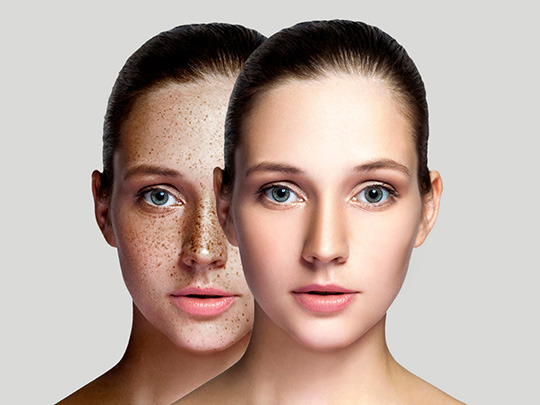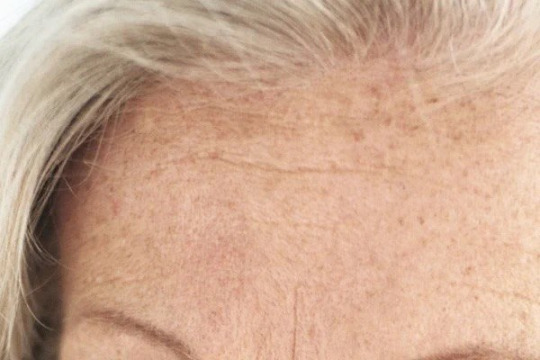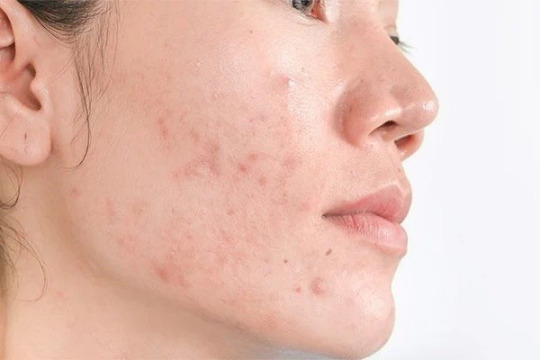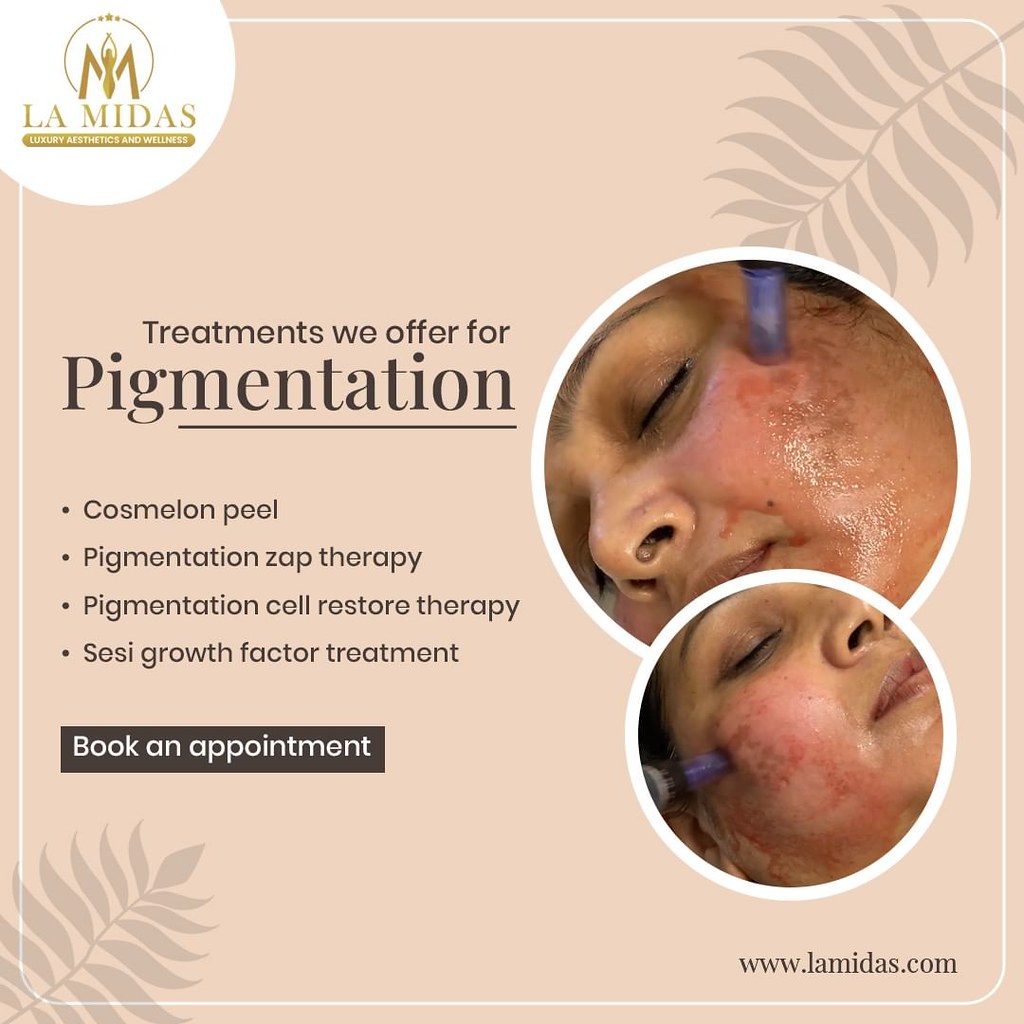#pigmentation
Text

Skin♥️
5 notes
·
View notes
Text
Face masks have become an essential personal protection equipment in the wake of the COVID-19 outbreak. Face masks are becoming more and more popular, therefore choosing the correct manufacturer is essential to guaranteeing quality.
Visit:- Essential Factors to Consider When Selecting Face Mask Manufacturers?
#facewash#haircareproducts#soaps#beautygel#facemask#hairmask#facecream#bodywash#migraine#Pigmentation#acne#DistributorsWanted#Distributorship#new#BrandAwareness#business#go4distributors
2 notes
·
View notes
Text
Chiss Blue: An Update
Featuring everyone’s favorite bird, the blue-footed booby!

I’ve previously discussed how blue occurs in nature, and the Chiss! However my friend pointed out that I’d missed a very important example, that being the blue-footed booby, with their glorious blue feet and beaks.
(Not so long but long enough):
Blue-footed boobies get their coloration from their diet of fresh fish, which includes carotenoid pigments. Carotenoids are pigments produced mainly by plants and algae that are then absorbed by animals that consume them: flamingos, shrimp, salmon, and lobsters are all colored by carotenoids from their diets. Carotenoids can produce different colors depending on their chemical structure, and while yellow, orange, and red are more common, they also produce the blue in blue-footed boobies.
Carotenoids provide a number of benefits, including boosting the immune system. The color of a blue-footed booby is a display of their health: healthy, well-fed birds have a more vibrant color, which dulls with age and poor nutrition. Both females and males use the color to evaluate prospective mates.
To bring this back around to the Chiss, carotenoid pigmentation would raise some interesting questions regarding Chiss within the wider galaxy: do they have specific dietary requirements in order to get enough carotenoids? Does their diet consist mainly of fish, or do they get the carotenoids elsewhere? Is that why Thrawn was so pale in Rebels?
Either way, the good news is that carotenoids may provide some protection from the sun! So their blue skin might protect the Chiss from nasty sunburns - probably quite necessary if they’re spending time on the surface of a sunny planet covered in reflective ice and snow.
#a followup on chiss biology#chiss biology#sci fi biology#research#chiss skin#blue skin#star wars#chiss headcanons#thrawn#blue color#rebels#chiss sunburns#blue footed booby#pigmentation#enjoy :)
77 notes
·
View notes
Photo


What 'Caucasian' means
Why do people in the US and UK (unlike in most of Europe) refer to European people as Caucasian?
The term "Caucasian" was introduced by the German anthropologist Johann Friedrich Blumenbach, who was busy measuring skulls in Georgia in the 19th century, and for no good reason decided that the Caucasus was the birthplace of mankind. He made division of Aryan, Semitic (Jews) and Hamitic (north Africans), just as it was written in Genesis.
We Europeans did not, of course, wish to be seen as having racial connections with Jews or Africans, and German Nazi extermination policies gave the term "Aryan" a bad name.
Blumenbach's theories have long been discounted in modern anthropology, yet his term lives on. This classification of white non-Jewish European was adopted by US immigration control, who needed to keep a check on the races coming in that were not black, brown or Jewish. "Caucasian" is just an illogical yet convenient category, and so it lives on, whenever we have to fill in an identity form: even if it is just an online dating site.
David Bye, Göd, Hungary
Whites tan to get brown, but naturally brown people stay out of the sun if they can in order to get whiter. Now "white" is a term of abuse, and "Caucasian" is a more innocuous way to describe us.
The paradigm of the “typically Jewish” nose originates in the craniological studies of Johann Friedrich Blumenbach (1752–1840). Blumenbach claimed to have evidence that Jews had an especially prominent nasal bone. Der Giftpilz (The Poisonous Mushroom), a Nazi schoolbook published by the Stürmer Verlag in 1938, provides an example of how such anti-Semitic clichés about body shapes were spread. It was printed in a first edition of 60,000 copies.

Blumenbach assumed that all morphological differences between the varieties were induced by the climate and the way of living and he emphasized that the differences in morphology were so small, gradual and transiently connected that it was not possible to separate these varieties clearly.
Although Blumenbach did not propose any hierarchy among the five varieties, he placed the Caucasian form in the center of his description as being the most "primitive" or "primeval" one from which the other forms "degenerated".
In the 18th century, however, these terms did not have the negative connotations they possess today.
At the time, "primitive" or "primeval" described the ancestral form, while "degeneration" was understood to be the process of change leading to a variety adapted to a new environment by being exposed to a different climate and diet.
Hence, he argued that physical characteristics like skin color, cranial profile, etc., depended on geography, diet, and mannerism. Further anatomical study led him to the conclusion that 'individual Africans differ as much, or even more, from other Africans as from Europeans'.
Like other monogenists such as Georges-Louis Leclerc, Comte de Buffon, Blumenbach held to the "degenerative hypothesis" of racial origins.
Blumenbach claimed that Adam and Eve were Caucasian inhabitants of Asia, and that other races came about by degeneration from environmental factors such as the sun and poor diet.
Thus, he claimed, Negroid pigmentation arose because of the result of the heat of the tropical sun, while the cold wind caused the tawny colour of the Eskimos, and the Chinese were fair-skinned compared to the other Asian stocks because they kept mostly in towns protected from environmental factors.
He believed that the degeneration could be reversed in a proper environmental control and that all contemporary forms of man could revert to the original Caucasian race.

Blumenbach was regarded as a leading light of German science by his contemporaries. Kant and Friedrich Schelling both called him "one of the most profound biological theorists of the modern era.
In the words of science historian Peter Watson, "roughly half the German biologists during the early nineteenth century studied under him or were inspired by him:
#johann blumenbach#pigmentation#kemetic dreams#german#nazi#nazis#caucasian#negroid#chinese#eskimos#inuit#asia#blumenbach#adam and eve#asian#african#africans#racism#scientific racism#european#europeans#european history#dutchland#deutschland
11 notes
·
View notes
Text

What You Need to Know About Skin Care After Sun Exposure
Sun exposure can have both positive and negative effects on your skin. On one hand, it can provide vitamin D, boost your mood, and enhance your appearance. On the other hand, it can also cause sunburn, premature aging, and skin cancer. Therefore, it is important to know how to protect your skin from the sun and how to take care of it after sun exposure.
How to Protect Your Skin from the Sun
The best way to protect your skin from the sun is to avoid excessive sun exposure, especially between 10 a.m. and 4 p.m., when the sun's rays are the strongest. However, if you have to go outside during these hours, you should follow these tips:
- Wear sunscreen with at least SPF 30 and broad-spectrum protection, which can block both UVA and UVB rays. UVA rays can penetrate deeper into the skin and cause wrinkles, sagging, and dark spots. UVB rays can damage the surface of the skin and cause sunburn and skin cancer. You should apply sunscreen 15 to 30 minutes before going outside and reapply every two hours or after sweating or swimming.
- Wear protective clothing, such as long-sleeved shirts, pants, hats, and sunglasses. You can also look for clothes with UPF (ultraviolet protection factor), which can indicate how much UV radiation can pass through the fabric. The higher the UPF, the better the protection. For example, a shirt with UPF 50 can block 98% of UV rays.
- Seek shade whenever possible, such as under trees, umbrellas, or awnings. However, keep in mind that shade does not provide complete protection, as UV rays can still reflect from the ground, water, or sand. Therefore, you should still wear sunscreen and clothing even if you are in the shade.
- Avoid artificial tanning, such as tanning beds, lamps, or booths. These devices can emit UV rays that are even more intense than the sun and can increase your risk of skin cancer and aging. If you want to have a tan, you can opt for safer alternatives, such as self-tanning products or spray tans.
How to Take Care of Your Skin After Sun Exposure
Even if you follow the above tips, you may still experience some degree of sun damage after being outside. This is because the sun can affect your skin in various ways, such as:
- Dehydrating your skin, which can make it dry, flaky, and tight. This can also impair your skin's barrier function, which can make it more vulnerable to infections and irritants.
- Inflaming your skin, which can cause redness, swelling, pain, and itching. This can also trigger the production of free radicals, which are unstable molecules that can damage your skin cells and DNA.
- Pigmenting your skin, which can cause tanning, freckles, or dark spots. This is a result of your skin producing more melanin, which is a pigment that can protect your skin from further sun damage. However, too much melanin can also cause uneven skin tone and hyperpigmentation.
- Aging your skin, which can cause wrinkles, sagging, and loss of elasticity. This is a result of your skin breaking down collagen and elastin, which are the proteins that give your skin its structure and firmness.
To minimize these effects and help your skin recover after sun exposure, you should follow these tips:
- Wash your skin gently with a mild cleanser and lukewarm water. This can help remove any dirt, sweat, or sunscreen residue from your skin and prevent clogged pores and breakouts. Avoid using harsh soaps, scrubs, or hot water, as they can irritate your skin and strip away its natural oils.
- Moisturize your skin generously with a hydrating lotion or cream. This can help replenish the moisture that your skin lost from the sun and restore its barrier function. Look for moisturizers that contain soothing and healing ingredients, such as aloe vera, chamomile, oatmeal, or green tea. Avoid moisturizers that contain alcohol, fragrance, or retinoids, as they can dry out or sensitize your skin.
- Cool your skin with a cold compress, ice pack, or damp cloth. This can help reduce the inflammation, pain, and itching that your skin may experience after sun exposure. You can also use products that contain cooling and anti-inflammatory ingredients, such as menthol, cucumber, or calamine. Avoid applying ice directly to your skin, as it can cause frostbite or damage your blood vessels.
- Treat your skin with products that can repair the sun damage and prevent further harm. For example, you can use products that contain antioxidants, such as vitamin C, vitamin E, or niacinamide, which can neutralize the free radicals and brighten your skin tone. You can also use products that contain ingredients that can stimulate collagen and elastin production, such as peptides, growth factors, or retinol. However, be careful with using products that can make your skin more sensitive to the sun, such as alpha hydroxy acids, beta hydroxy acids, or benzoyl peroxide. You should use them at night and always wear sunscreen during the day.
- Hydrate your body internally by drinking plenty of water and fluids. This can help replenish the water that your body lost from sweating and prevent dehydration, which can affect your skin and overall health. You can also eat foods that are rich in water, such as fruits, vegetables, soups, or smoothies. Avoid drinking alcohol, caffeine, or sugary drinks, as they can dehydrate your body and worsen your skin condition.
Conclusion
Sun exposure can have both positive and negative effects on your skin, depending on how much and how often you expose yourself to it. To protect your skin from the sun and take care of it after sun exposure, you should follow the tips mentioned above and consult your dermatologist if you have any concerns or questions. By doing so, you can enjoy the benefits of the sun while minimizing its risks and keeping your skin healthy and beautiful.
#sun exposure#skin care#sun protection#sunburn#hydration#inflammation#pigmentation#aging#antioxidants#collagen#elastin
2 notes
·
View notes
Text

Pigmentation Skin Treatment | Best Skin Treatment For Pigmentation (vcareskinclinic.com)
#pigmentation treatment#hyper pigmentation treatment#pigmentation#pigmentation skin treatment#skin pigmentation#skin treatment#skin clinic#skin care clinic#skin pigmentation treatment
2 notes
·
View notes
Text

Unlock the Secrets to Radiant Skin! Dive into the world of pigmentation with me, your friendly dermatologist! Discover the causes, solutions, and your path to flawless skin. Join me on this journey to #SkinConfidence at Dr.Praneeth Clinic
1️⃣ Sun Exposure:
Excessive sun exposure can lead to issues like sunspots and freckles. Protect your skin with SPF 30+ sunscreen, seek shade, and consider sunless tanning for a safe glow.
2️⃣ Genetics:
Family history can influence pigmentation. Knowing your genetic risk helps tailor skincare and dermatologist consultations.
3️ Hormonal Changes:
Hormonal shifts, like pregnancy or birth control use, can trigger melasma. Consult a dermatologist for personalized guidance.
4️ Post-Injury:
Injuries, even acne, can cause pigmentation. Treat them gently and consider scar-minimizing products.
5️ Certain Medications:
Some medications, such as antibiotics, may induce pigmentation. Consult your healthcare provider if skin changes occur during treatment.
Book Your Initial Consultation Today at 𝑫𝒓.𝑷𝒓𝒂𝒏𝒆𝒆𝒕𝒉 𝑪𝒍𝒊𝒏𝒊𝒄
Visit - www.drpraneethclinic.com
Call - 9704946534/040-48553939
Address: JB Shashi Arcade, 2nd Floor, JNTU Rd, KPHB.
#skin#skincare#skinclinic#skinhealth#skinboosters#skincaretips#skincareproducts#pigmentation#pigmentationremoval#pigmentationsolution#pigmentationtreatment#beautyskin#beautyskintips#beautyskincare#drpraneeth#drpraneethclinic#drpraneethclinicinkukatpally#KPHB#kphb#kphbcolony#hyderbaad#hyderbad
2 notes
·
View notes
Text
Animal Crossing Fish - Explained #226
Brought to you by a marine biologist getting back on her feet...
CLICK HERE FOR THE AC FISH EXPLAINED MASTERPOST!
I know I've been gone for a while - it's not because of the new Pokemon game, although it helped. I'm back to finish up what I started. So, today, let's start with a blank slate - the white versions of the guppy, the freshwater angelfish, and the koi. [Long post warning because pictures!!!]

Specifically, these fish are the White Tuxedo Guppy, the White Butterfly Koi, and the White Angelfish. All three appeared once in AC Pocket Camp for its Fishing Tourney #27. The theme was "weddings" and occurred in June of 2020, so explains why they're all white.

We've already covered the taxonomy and delved deeper into these species elsewhere in the series. They are here -> Guppy, Koi, and Angelfish. For review, all three of these fish are freshwater species, native to different river systems, and all are species humans like to keep ornamentally. Likewise, these white versions represent specially bred specimens that not only feature a strange white coloring, but also different fin lengths and shapes. This is especially true for the butterfly koi, specifically known for its long, graceful fins.

But I want to take a "minute" to talk about pigments in the animal kingdom and then the certain genetic anomalies that fuck it up. So lets talk about pigment - what is it and what does it do? To sum it up very quickly, biological pigments, or biochromes, are molecules produced within specialized cells that absorb and reflect certain wavelengths of light, aka, they give animal skin, eyes, fur, etc. color. These colors assist animals in their daily lives, by providing camouflage for animals so that their prey or their predators don't see them coming or going, respectively. Other animals display color to communicate, either to attract a mate or tell a rival to back off. Pigments can even protect the skin from UV radiation (as is the function of melanin in human skin). This is all grade school science class stuff, but it's really important to ecology. Color and color patterns can tell you so much about how an animal lives its life, even without observation. But like all living functions, pigment can get messed up, too, and in a lot of ways.

By Stephenkniatt at English Wikipedia - Transferred from en.wikipedia to Commons., Public Domain
Perhaps the most famous pigment disorder is albinism. This disorder is characterized by an absence of pigmentation, turning the animal white (in plants, albinism is from the absence of chlorophyll). The term albinism has many incomplete definitions, however, we typically recognize it as a lack of melanin, which results in an all-white body and red eyes. It is especially apparent in mammals, where melanin is the only pigment we make! This disorder comes with a lot of drawbacks for any animal - an all-white body means they've lost the functions of their species' coloration, they have poor vision and eye development, hearing disorders, and, in some studies, the disorder is found to be "semi-lethal", generally reducing the life span. Fortunately, I don't think the ACPC wedding fish have this condition.

By The original uploader was Dawson at English Wikipedia. - Transferred from en.wikipedia to Commons., CC BY-SA 2.5,
I think our fish for today are Leucistic, in that they have a loss of much of their pigments, but not all. For the fish and for the snake above, pigment is absent in the scales, but the eyes are just fine. Leucism is often mistaken for albinism. The big difference between them is the severity and the pigments lost - albinism is a total lack of melanin, but leucism affects all the types of pigments found in the animal kingdom and at different intensities, and therefore can appear "partial", as seen in piebald individuals. And yes, all sorts of albinism and leucism are specifically bred for in the pet trade.

Erythrism is when an individual is strangely more red than usual. I don't have a lot to say about this one but to look it up on Google "erythristic animals" and see how utterly magical they look. Pink bugs are a guarantee.

Then there's Melanism, the exact opposite of albinism/leucism - it is the increased production of melanin, making an animal's skin, etc. very very dark, or completely black. Sometimes melanism gets out of hand and also dyes the inside of the animal black, as is the case with Ayem Cemani breed of chicken. Also worth a Google search: "melanistic animals". Enjoy.
And there you have it. Fascinating stuff, no?
#fish#angelfish#guppy#koi#butterfly koi#animals#animal crossing#animal crossing pocket camp#albinism#leucism#melanism#erythrism#pigmentation#biology#science in video games#animal crossing fish explained
11 notes
·
View notes
Text
3 Tips To Find The Best Aesthetics Clinic
The best aesthetics clinic can help you achieve natural beauty that will make you look and feel your best. However, there are a few things to keep in mind to find a top clinic like DrAyadAestheticsClinicinBicester that will offer you the best possible results. Read on to find out.
First, find an aesthetics clinic that has a good reputation for providing high-quality services in nonsurgical facelift. You can check online reviews of their previous patients to check. That way, you can guarantee that you will get efficient results from them. Second, ask around for recommendations from your close friends or family members. This is one of the best ways to find quality clinics that have proven and tested services. Third, make sure the clinic has a team of experienced, highly-trained professionals who are passionate about their work and have appropriate credentials and educational backgrounds. This ensures efficiency, safety, and satisfaction of aesthetic treatments.
By considering the three simple tips provided, you can be sure to find an aesthetics clinic for face slimming that will guarantee you cost-efficiency and a confidence boost. So what are you waiting for? Start your search now.
#aesthetics#plastic surgery#cosmetic surgery#facelift#nonsurgical facelift#eyelid lift#blepharoplasty#endolift#facetite#dermal fillers#morpheus 8#non surgical rhinoplasty#nose fillers#lip fillers#medical skincare#acne#pigmentation#wrinkles#buccal fat removal#face slimming#dr ayad
2 notes
·
View notes
Text

Dr Aditi Jha is Dermatologist in Chandigarh and she undertakes skin treatment like laser hair removal, laser skin toning, chemical peel, pigmentation, scar and mole removal, etc.
#dermatologist#draditijha#dermatologistinchandigarh#dermatosurgery#laserhairremoval#laserskintoning#chemicalpeel#pigmentation#scarandmoleremoval#laserhairremovaltreatment#skintreatment#dr aditi jha
2 notes
·
View notes
Text
What is body polishing, how it is done, and what are the benefits?

All of us care for our face well but very few of us care about other body parts. For the facial glow, we use multiple face washes, cream, cleanser, and toner. For hands and feet, there are manicure and pedicure treatments. Very few of us know about the treatments available to shine the entire body.
If you want to shine your neck, back Tummy, underarm and entire body then Body Polishing(Microdermabrasion) is the treatment of choice. Body polishing removes dead skin, gets nutrients, skin shines, and becomes attractive.
Body Polishing for Brides-to-be
Every bride wants to look their best on her big day. On wedding day all eyes are on the bride so she wants her skin should be soft, clean, and shiny so that she receives the best compliments. Not only face, but maintenance of entire body glow is also necessary for such special occasion. So, body polishing is the right choice. It is a beauty treatment that provides a super glow to the entire body with multiple other benefits.
Nowadays body polishing is in trend for brides. This procedure is not only easy and safe but also provides an instant glow to the entire body. This procedure is very much "in demand" for bridal beauty treatments. After the procedure, dead cells remove and the skin becomes shiny. Skin receives more nutrition and the body relaxes. The beauty of Microdermabrasion is that it works on the outer layer(epidermis) as well as the inner layer (dermis) of the skin. Your skin looks younger so you become tension free and can enjoy your new beginning.
Benefits of advancement
In earlier eras, body polishing was done by physical scrubbing methods with household ingredients. If you have dry or sensitive skin, using a physical scrub could do you far more harm than good. Physical peeling methods can cause damage to the skin by causing micro-tears on its surface. In the long run, it causes wrinkles in the skin and increases susceptibility to pigmentation. As Medi Facials with the increased medical knowledge and technology advancement, body polishing treatment has much more refined now with sophisticated equipment.
Type of skin polishing
1. Crystal Microdermabrasion
Crystal microdermabrasion is the most popular body polishing treatment. During a treatment, super-fine aluminum oxide crystals are sent from a container on the microdermabrasion machine, through a tube, and to a stainless steel probe. Via the probe, the crystals are gently sprayed over the skin.
The crystals and exfoliated skin particles are simultaneously vacuumed away through the same probe.1 Used crystals are sent to a second container on the machine and are discarded after every procedure, they aren't reused.
2. Diamond Microdermabrasion
Instead of using crystals to exfoliate the skin, a probe with a diamond tip is passed over the skin. The diamond tip exfoliates the skin and, like the crystal version, the exfoliated particles are then vacuumed away through the same probe. Diamond-tip microdermabrasion is a bit cleaner, simply because there are no stray gritty crystals left behind on the skin.
Some people prefer diamond microdermabrasion because of the lack of crystals.
Both forms of microdermabrasion work similarly. The skin is deeply exfoliated by the diamond tip or crystals, so it feels softer and smoother just after treatment. The exfoliation reduces the formation of comedones and brightens the complexion.
The suction aspect of the treatment is as vital as it stimulates the dermis, causing a remodeling process to occur.
Body polishing or microdermabrasion triggers a wound response in the skin. As the skin repairs itself, it becomes softer, smoother, more elastic, and looks healthier as a result.
How much does the skin polishing cost?
Depending upon the type of skin polishing you choose, the cost ranges between 8000 to 12000 Rs in India. Cost also depends upon the area of skin you treat and hygienic standards followed by your cosmetic dermatologist. The cost also depends on the severity of textured skin.
Benefits of Body Polishing
1. Body polishing is much more effective than a regular spa facial without the risk of side effects.
2. Dead cells removed from the body along with tanning. So, skin becomes soft and shiny.
3. Body becomes relaxed and stress-free.
4. Removes dark spots from the body and skin heals quickly.
5. Gives even skin tone to the entire body.
6. It uses only crystals and water so totally safe for all, even for sensitive skin too.
If you have any queries regarding Body Polishing treatment feel free to contact us by e-mail. Alternatively, you can log in to the skinssence website for more details.
Read the full article
#beautyfacials#CARBONFACIAL#CHEMICALPEEL#fairnesstreatment#HYDRAFACIAL#INSTAGLOWFACIAL#MEDIFACIAL#microdermabrasion#PIGMENTATION#skinlaser#skinlightening#SKINCARE
4 notes
·
View notes
Text
What Causes Dark Spots and How an I Reduce Hyperpigmentation?
Uneven skin pigmentation (or hyperpigmentation as it is often known) is a common skin complaint. Dark spots – known as age spots or sun spots – or dark patches of skin frequently appear on the face, hands and other parts of the body regularly exposed to the sun.
This article outlines the different types of hyperpigmentation and explains what causes them. We look at how you can help prevent hyperpigmentation in the first place, as well as steps you can take to reduce dark spots or patches once they have formed.
What is hyperpigmentation?
Hyperpigmentation is the term used to describe areas on uneven pigmentation in skin.
Hyperpigmentation appears as darkened patches or spots on the skin that make skin look uneven. The spots are known as age spots or sun spots and hyperpigmentation is also at the heart of skin conditions such as melasma and post-inflammatory hyperpigmentation.
People with phototype 3 – 6 (Please refer to Fitzpatrick photo-typing scale) are normally more affected by hyperpigmentation marks than those with phototype 1 & 2 as skin pigmentation is stronger in phototypes 3 - 6.

What are the Different Types of Hyperpigmentation?
Pigment spots such as age spots (which are also known as sun spots) are caused by sun exposure. For this reason, they appear mainly on body parts that are frequently exposed such as the face, neck, décolleté, hands and arms.
They tend to be small, darkened patches of skin.
Hyperpigmentation: melasma
Also known as chloasma, Melasma is a condition where larger patches of hyperpigmentation develop mainly on the face.
Although it can affect both men and women, Melasma is most common in women and is thought to be triggered by changes in hormone levels.
Melasma occurs in 10–15 percent of pregnant women and in 10–25 percent of women taking oral contraceptives 1 and is sometimes referred to as “the mask of pregnancy”.
You can read more about Melasma in What causes Melasma and how can I reduce dark patches on my skin?

Hyperpigmentation: Post-inflammatory hyperpigmentation
Post-inflammatory hyperpigmentation occurs when a skin injury or trauma heals and leaves a flat area of discolouration behind.
It’s commonly found among acne sufferers and can also be caused by cosmetic procedures such as dermabrasion, laser treatment and chemical peels.
There are other factors that can cause patches of skin to become darker – such as scarring, birthmarks, solar or actinic keratoses and skin cancers – but these aren’t considered to be forms of hyperpigmentation.

Read more in detail about hyperpigmentation on Eucerin blog.
2 notes
·
View notes
Text
The Ultimate Guide to Understanding Pigmentation: Causes, Treatments, and PreventionSave
This ultimate guide explores pigmentation, its causes, and treatments
Photo by Almada Studio
Insert your Email to recieve a massage whenever a new post is posted:
Type your email here
Submit
Follow This Blog: Facebook
The Ultimate Guide to Understanding Pigmentation: Causes, Treatments, and Prevention
Are you tired of dealing with uneven skin tone and dark spots? Understanding pigmentation is the first step to achieving a flawless complexion. In this ultimate…

View On WordPress
#AHA#Anti Aging#BHA#Cult Beauty#Glycolic Acid#iHerb#Kojic acid#Lactic acid#Licorice acid#Niacinamide#Peeling#pigmentation#Retinoids#Retinols#Skincare Tips#SPF#The Ordinary#The Skincare Guide#Vitamin C
0 notes
Text
Fade Away: The Science Behind Pigmentation Treatment
Pigmentation issues, such as melasma, hyperpigmentation, and age spots, can be a source of frustration for many individuals seeking clear, radiant skin. These conditions often arise due to a variety of factors, including sun exposure, hormonal changes, genetics, and skin inflammation. Fortunately, advancements in dermatological science have led to an array of effective pigmentation treatment options. In this comprehensive guide, we delve into the science behind pigmentation treatments, exploring the mechanisms of action, popular treatment methods, and key considerations for achieving optimal results.
Understanding Pigmentation
Before delving into treatment options, it's essential to understand the underlying mechanisms of pigmentation. Our skin color is determined by the presence of a pigment called melanin, which is produced by melanocytes, specialized cells found in the skin's epidermis. Melanin serves as a natural defense mechanism against UV radiation, absorbing and dispersing harmful rays to protect the skin.
However, various factors can disrupt the normal production and distribution of melanin, leading to pigmentation issues. For example, excessive sun exposure can trigger the overproduction of melanin, resulting in dark spots and uneven skin tone. Hormonal fluctuations, such as those experienced during pregnancy or menopause, can also contribute to the development of melasma, a common pigmentation disorder characterized by brown patches on the face.

Treatment Approaches
Pigmentation treatment approaches aim to regulate melanin production, reduce existing pigmentation, and promote overall skin rejuvenation. The choice of treatment method depends on factors such as the type and severity of pigmentation, skin type, and individual preferences. Here are some popular pigmentation treatment options:
Topical Treatments
Hydroquinone: A skin-lightening agent that inhibits melanin production and helps fade dark spots.
Retinoids: Derivatives of vitamin A that promote cell turnover and fade pigmentation by accelerating the shedding of melanin-containing skin cells.
Vitamin C: An antioxidant that brightens the skin and reduces pigmentation by inhibiting melanin synthesis.
Kojic Acid: A natural ingredient derived from certain fungi that inhibits melanin production and lightens existing pigmentation.
Chemical Peels
Chemical peels involve the application of exfoliating agents, such as alpha hydroxy acids (AHAs) or trichloroacetic acid (TCA), to the skin to remove the outermost layers and reveal smoother, more even-toned skin underneath.
Laser Therapy
Laser treatments, such as intense pulsed light (IPL) therapy and fractional laser resurfacing, target pigmented areas with high-energy light beams, breaking down melanin deposits and stimulating collagen production for improved skin texture and tone.
Microdermabrasion
Microdermabrasion is a non-invasive procedure that uses a handheld device to gently exfoliate the skin, reducing pigmentation and promoting cell renewal.
Cryotherapy
Cryotherapy involves the application of extreme cold to targeted areas of the skin to destroy unwanted pigmentation, such as age spots and sun spots.
Key Considerations
While pigmentation treatments can yield impressive results, it's important to approach them with caution and consideration for individual skin needs. Here are some key considerations to keep in mind:
Consultation: Before undergoing any pigmentation treatment, consult with a qualified dermatologist or skincare professional to assess your skin condition and determine the most suitable treatment approach.
Sun Protection: Protecting your skin from harmful UV radiation is essential both during and after pigmentation treatment. Use broad-spectrum sunscreen with SPF 30 or higher, wear protective clothing, and avoid prolonged sun exposure, especially during peak hours.
Consistency: Achieving optimal results often requires consistent use of topical treatments and adherence to recommended treatment protocols. Be patient and committed to your skincare routine to see noticeable improvements over time.
Maintenance: Pigmentation issues may recur over time, especially with factors like sun exposure and hormonal changes. Incorporate maintenance treatments and preventive measures into your skincare regimen to prolong the effects of pigmentation treatment.
Conclusion
Pigmentation issues can significantly impact one's confidence and quality of life, but effective treatment options are available to help fade dark spots, even out skin tone, and restore a youthful glow. By understanding the science behind pigmentation and exploring the diverse range of treatment approaches, individuals can take proactive steps towards achieving clearer, more radiant skin. Whether through topical treatments, laser therapy, or other innovative techniques, the journey to overcoming pigmentation concerns begins with informed decision-making and expert guidance from skincare professionals. Remember, with dedication and the right treatment plan, achieving a complexion that's free from pigmentation woes is within reach.
0 notes
Text
Types of Pigmentation Treatment offered by La Midas Aesthetics
BB Glow Treatment
Cosmelan
PRP (Platelet-Rich Plasma)
Oxygen Therapy
Laser Toning
Glow Booster Therapy
Meso Glow
Pigmentation Zap Therapy
Q Switch laser
Cell Restore Therapy
#hyper pigmentation treatment#pigmentation treatment#BB glow treatment#cosmelan#PRP#oxygen therapy#laser toning#glow booster#meso glow#pigmentation
0 notes
